Evaluation of Subsidy Programmes
This research group focuses on two main research questions: (i) What is the causal effect of cooperative innovation activities on the performance of firms and regions? (ii) What are the causal effects of public Research and Development (R&D) support schemes on the performance of firms and regions? The first research question concerns the dynamics of firms and regions as a result of their different innovation activities. We apply a micro-based integrative perspective on innovative activities which allows identifying causal effects of cooperative activities on specific outcomes (e. g., patent applications, scientific publications, employment growth, or productivity growth). Concerning the second research question, recent studies mainly focus on the evaluation of one specific subsidy scheme. Research in this group aims to overcome this shortcoming by considering various support schemes. Indicators for the firms’ success are (amongst others) patent applications and employment growth. The results allow insights for the future design of innovation support schemes.
Centre for Evidence-based Policy Advice (IWH-CEP)
Research Cluster
Economic Dynamics and StabilityYour contact

Mitglied - Department Präsidialbereich
EXTERNAL FUNDING
09.2019 ‐ 09.2022
Establishing Evidence-based Evaluation Methods for Subsidy Programmes in Germany (EVA-KULT)
European Regional Development Fund (ERDF)
The project aims at expanding the Centre for Evidence-based Policy Advice at the Halle Institute for Economic Research (IWH-CEP).
01.2018 ‐ 12.2020
Networked growth - Innovative Saxony-Anhalt through digital business models (Competence Center 4.0)
Federal Ministry for Economic Affairs and Energy (BMWI)
01.2017 ‐ 12.2018
Political Participation in Eastern Germany
Federal Ministry for Economic Affairs and Energy (BMWI)
12.2015 ‐ 11.2018
Socio-economic Effects of Research on Innovative Approaches for POC Diagnostics
Federal Ministry of Education and Research (BMBF)
Part of the EXASENS project. Coordinated by the Leibniz Institute of Photonic Technology (IPHT) in Jena, nine Leibniz institutes are working together on researching point-of-care (POC) technology for the prediction and diagnosis of chronic inflammatory respiratory diseases. See press release.
02.2017 ‐ 02.2018
The Importance of Non-University Research Institutions for the Development of Firms and Regions (Be_For_Reg-Projekt)
Federal Ministry of Education and Research (BMBF)
01.2015 ‐ 12.2016
Evaluation of the "Joint Task 'Improving the Regional Economic Structure'" in the Federal State of Saxony-Anhalt
Investitionsbank Sachsen-Anhalt
Refereed Publications
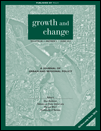
Actors and Interactions – Identifying the Role of Industrial Clusters for Regional Production and Knowledge Generation Activities
in: Growth and Change, No. 2, 2014
Abstract
This paper contributes to the empirical literature on systematic methodologies for the identification of industrial clusters. It combines a measure of spatial concentration, qualitative input–output analysis, and a knowledge interaction matrix to identify the production and knowledge generation activities of industrial clusters in the Federal State of Saxony in Germany. It describes the spatial allocation of the industrial clusters, identifies potentials for value chain industry clusters, and relates the production activities to the activities of knowledge generation in Saxony. It finds only a small overlap in the production activities of industrial clusters and general knowledge generation activities in the region, mainly driven by the high-tech industrial cluster in the semiconductor industry. Furthermore, the approach makes clear that a sole focus on production activities for industrial cluster analysis limits the identification of innovative actors.
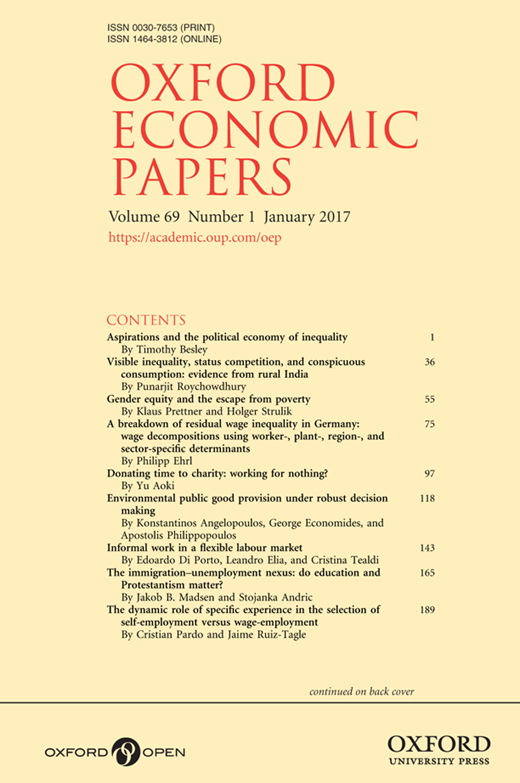
Non-union Worker Representation, Foreign Owners, and the Performance of Establishments
in: Oxford Economic Papers, No. 1, 2014
Abstract
Using German establishment data, this study provides the first econometric analysis on the interaction of establishment-level codetermination and foreign owners. Works councils are associated with higher productivity in domestic-owned establishments while they are associated with lower productivity in foreign-owned establishments. Our results conform to the notion that foreign ownership can involve strong tensions with the institutional patterns of the host country.
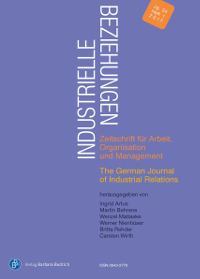
Adjustments in the Use of Temporary Agency before and during the 2008/2009 Economic Crisis
in: Industrielle Beziehungen, No. 1, 2014
Abstract
The use of temporary agency work in Germany strongly increased between 2002 and the economic crisis of 2008 and 2009. This increase was characterised by an intensified use in medium and large manufacturing plants and was concentrated within user firms, i.e. the intensive margin was dominant. These phenomena can be explained with reduced transaction costs and strong international competition and they indicate increased productivity amongst user firms. The sharp decline in the use of temporary agency work during the economic crisis was concentrated among exporters and large manufacturing plants and mostly driven by the extensive margin. Employment opportunities in the temporary work sector were in particular sensitive to changes in the international demand for goods of the German manufacturing sector.
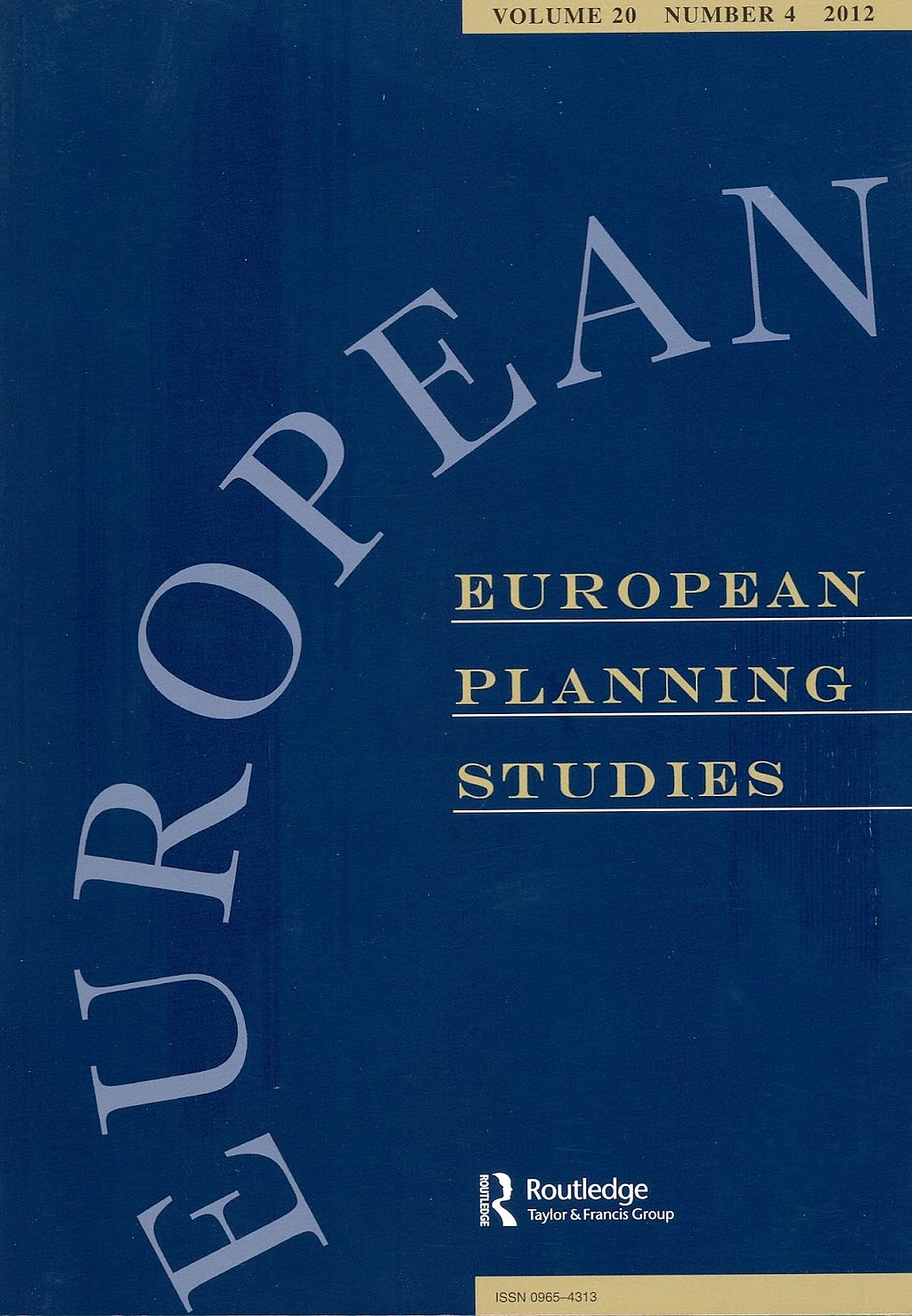
Guest Editorial: Which Regions Benefit from Emerging Industries? Guest Editorial
in: European Planning Studies, No. 11, 2013
read publication
The Impact of R&D Collaboration Networks on the Performance of Firms and Regions: A Meta-Analysis of the Evidence
in: International Journal of Networking and Virtual Organisations, No. 4, 2013
Abstract
Innovation is the result of an interactive process. Knowledge-intensive interactions among different partners are associated with a variety of advantages and disadvantages for the actors involved. Therefore, a rich body of literature investigating the impact of R&D collaboration networks on the innovation performance of firms and regions has developed over the last two decades. Those studies come to different results. The aims of this paper are manifold. First, the paper summarizes the results of the relevant literature. Second, a brief overview of the established methods and approaches used in the literature to investigate this research question is given. The third objective is to answer the question whether the achieved results in the literature are predetermined by the employed methods. Finally, relevant gaps for further research are identified. To answer these questions a meta-analysis of the relevant literature is conducted. This study shows that knowledge-intensive interactions have a rather positive impact on the performance of firms and regions. There is also evidence that the employed methods and approaches used in the literature to investigate this research question predetermine the outcome of the research.
Working Papers
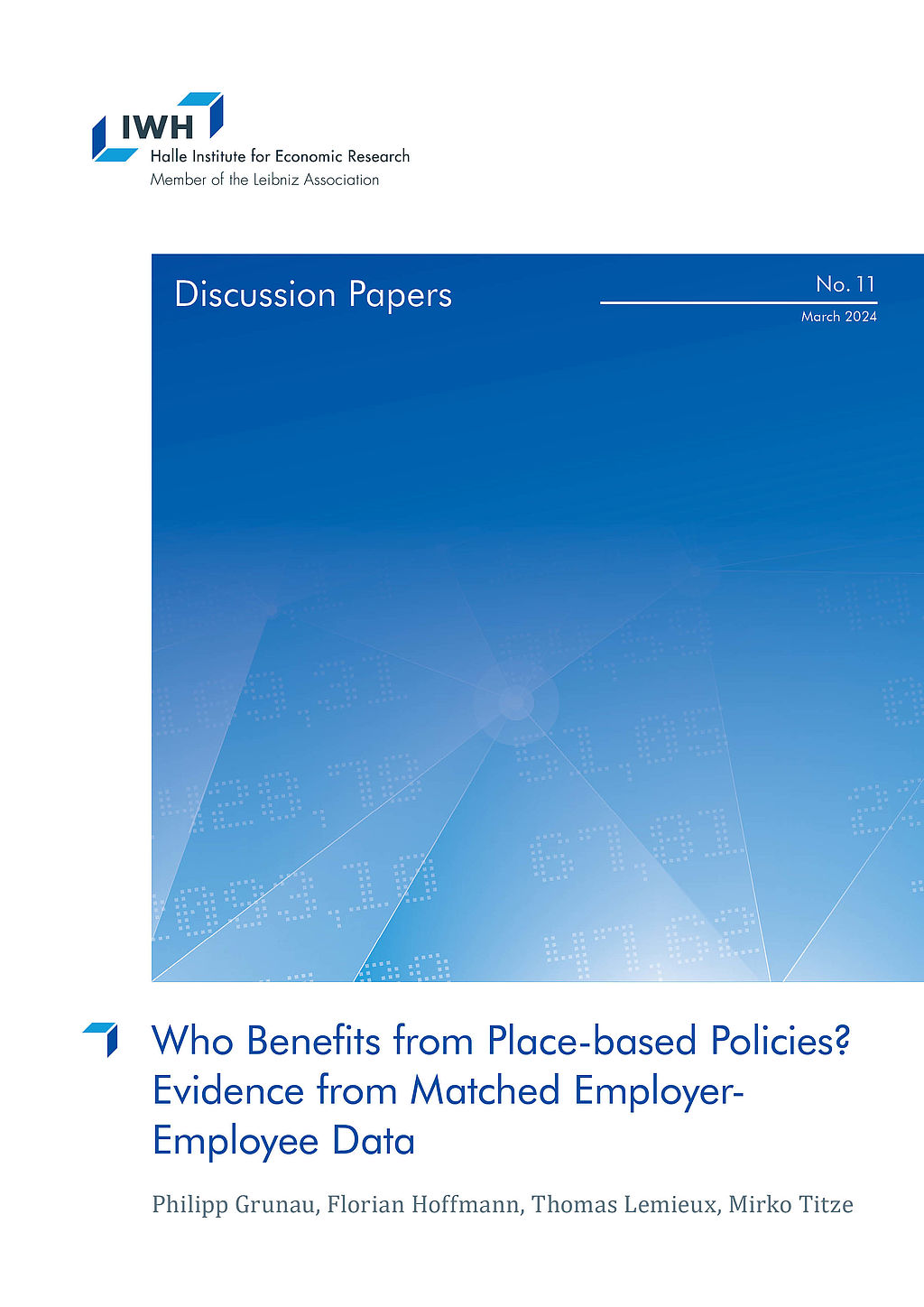
Who Benefits from Place-based Policies? Evidence from Matched Employer-Employee Data
in: IWH Discussion Papers, No. 11, 2024
Abstract
We study the wage and employment effects of a German place-based policy using a research design that exploits conditionally exogenous EU-wide rules governing the program parameters at the regional level. The place-based program subsidizes investments to create jobs with a subsidy rate that varies across labor market regions. The analysis uses matched data on the universe of establishments and their employees, establishment-level panel data on program participation, and regional scores that generate spatial discontinuities in program eligibility and generosity. These rich data enable us to study the incidence of the place-based program on different groups of individuals. We find that the program helps establishments create jobs that disproportionately benefit younger and less-educated workers. Funded establishments increase their wages but, unlike employment, wage gains do not persist in the long run. Employment effects estimated at the local area level are slightly larger than establishment-level estimates, suggesting limited spillover effects. Using subsidy rates as an instrumental variable for actual subsidies indicates that it costs approximately EUR 25,000 to create a new job in the economically disadvantaged areas targeted by the program.
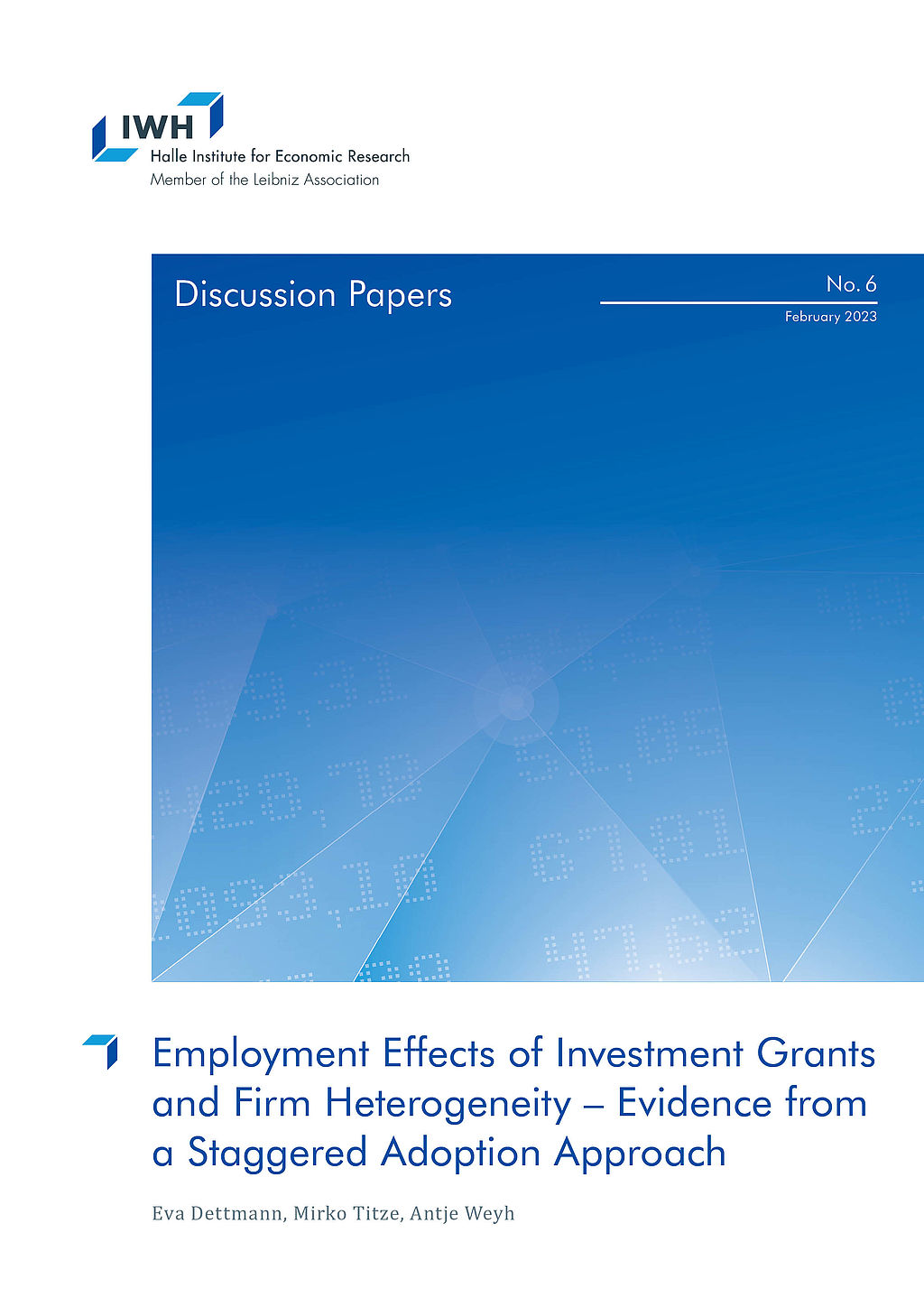
Employment Effects of Investment Grants and Firm Heterogeneity – Evidence from a Staggered Adoption Approach
in: IWH Discussion Papers, No. 6, 2023
Abstract
This study estimates the establishment-level employment effects of investment grants in Germany. In addition to the average treatment effect for the treated, we focus on discrimination in the funding rules as potential source of effect heterogeneity. We combine the difference-in-differences approach of Callaway and Sant’Anna (2021) that explicitly models variation in treatment timing with a ties matching at the cohort level. We observe a positive effect of investment grants on employment development in the full sample. The subsample analysis yields strong evidence for effect heterogeneity due to firm characteristics and the economic environment.
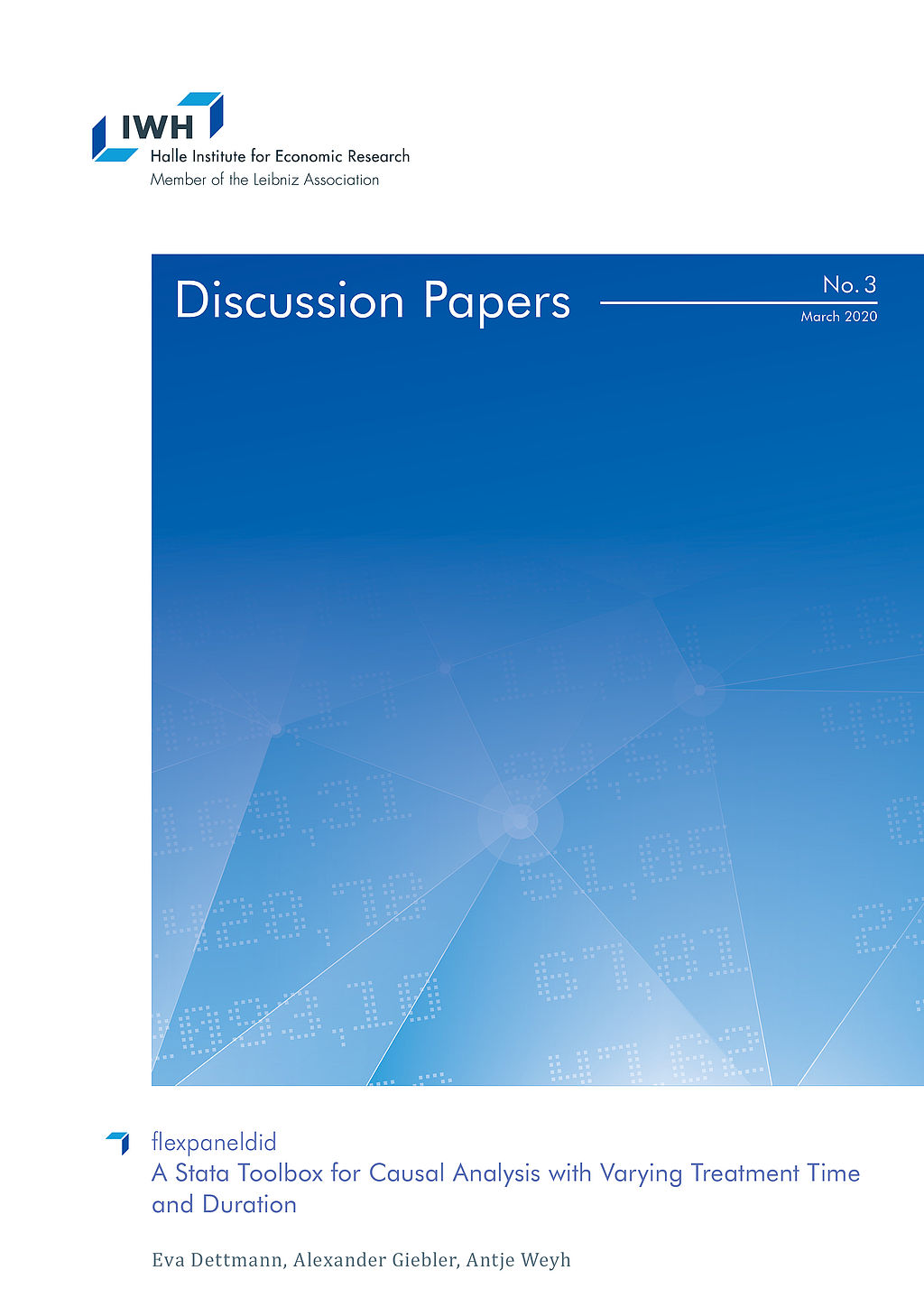
flexpaneldid: A Stata Toolbox for Causal Analysis with Varying Treatment Time and Duration
in: IWH Discussion Papers, No. 3, 2020
Abstract
The paper presents a modification of the matching and difference-in-differences approach of Heckman et al. (1998) for the staggered treatment adoption design and a Stata tool that implements the approach. This flexible conditional difference-in-differences approach is particularly useful for causal analysis of treatments with varying start dates and varying treatment durations. Introducing more flexibility enables the user to consider individual treatment periods for the treated observations and thus circumventing problems arising in canonical difference-in-differences approaches. The open-source flexpaneldid toolbox for Stata implements the developed approach and allows comprehensive robustness checks and quality tests. The core of the paper gives comprehensive examples to explain the use of the commands and its options on the basis of a publicly accessible data set.
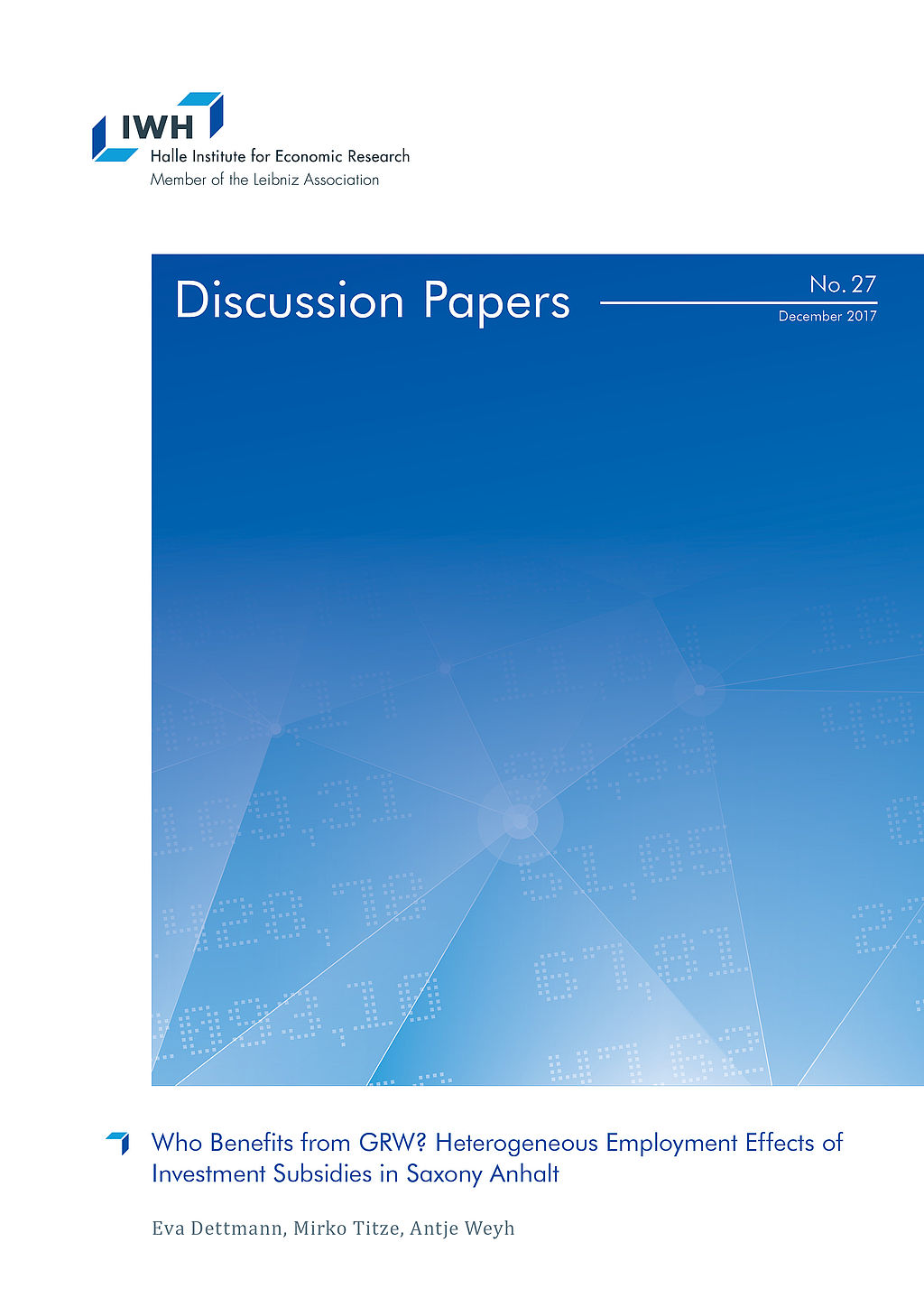
Who Benefits from GRW? Heterogeneous Employment Effects of Investment Subsidies in Saxony Anhalt
in: IWH Discussion Papers, No. 27, 2017
Abstract
The paper estimates the plant level employment effects of investment subsidies in one of the most strongly subsidized German Federal States. We analyze the treated plants as a whole, as well as the influence of heterogeneity in plant characteristics and the economic environment. Modifying the standard matching and difference-in-difference approach, we develop a new procedure that is particularly useful for the evaluation of funding programs with individual treatment phases within the funding period. Our data base combines treatment, employment and regional information from different sources. So, we can relate the absolute effects to the amount of the subsidy paid. The results suggest that investment subsidies have a positive influence on the employment development in absolute and standardized figures – with considerable effect heterogeneity.
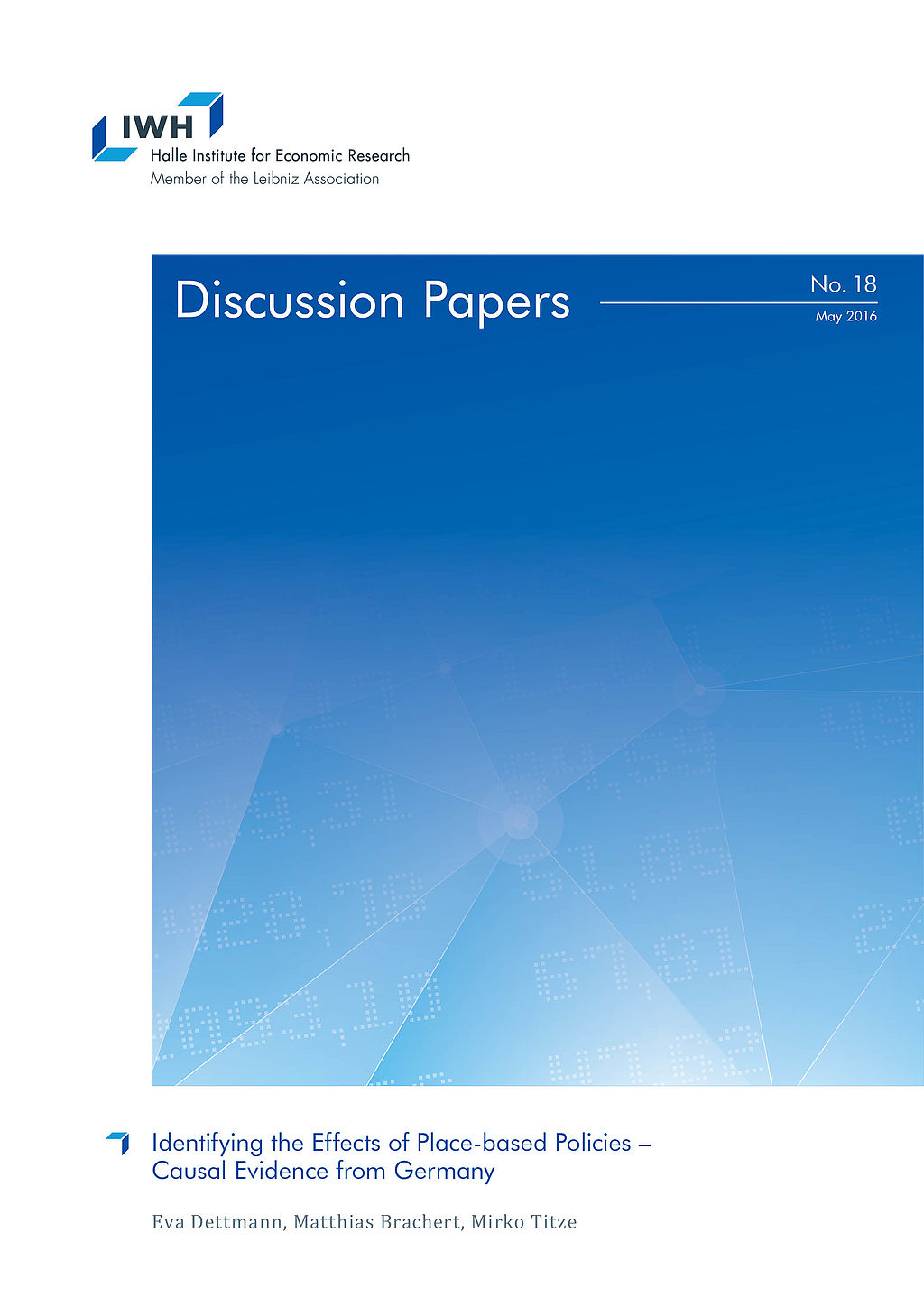
Identifying the Effects of Place-based Policies – Causal Evidence from Germany
in: IWH Discussion Papers, No. 18, 2016
Abstract
The German government provides discretionary investment grants to structurally weak regions to reduce regional disparities. We use a regression discontinuity design that exploits an exogenous discrete jump in the probability of receiving investment grants to identify the causal effects of the investment grant on regional outcomes. We find positive effects for regional gross value-added and productivity growth, but no effects for employment and gross wage growth.














